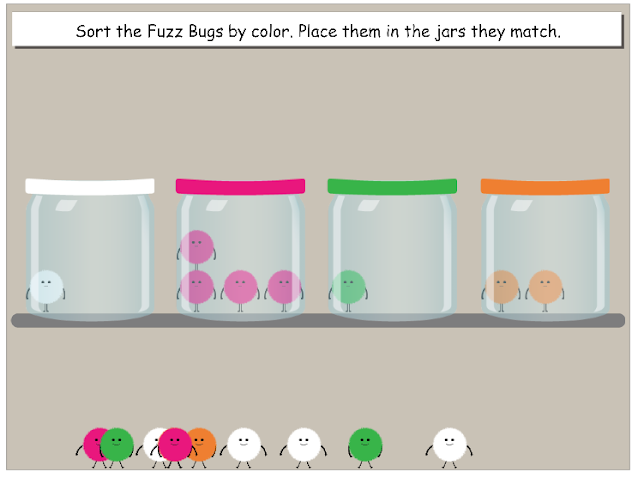
During the second grade, students begin to master multi-digit addition and subtraction facts. They also learn time-telling and money skills. In this grade, graphing is a part of the curriculum. Skip counting and multiplication are also included. Flashcards are a fun and effective way to practice fact fluency. Students need to create 15 flashcards for each total.
Game
Two grade math games can be an excellent way to engage kids in math lessons. These games are designed to reinforce a number of core skills, such as place value, addition, and subtraction. They help kids understand more complicated concepts, such as the analysis and description of shapes. Many of these interactive games allow kids to work on specific skills at their own pace.
Snakes and ladders are a fun grade two math game. This card game is a great way for children to improve their number sense and compete against other players. Students can either play by themselves or with a team. Teachers can also provide unique codes so that students can play with other students.

Units
These math games for 2 grade are intended to teach basic skills and fluency in addition, subtraction and multiplication. They are excellent for teaching about time and money as well as shapes. Some games can also be used to drill down on specific Common Core domains. A player might flip four cards, and then try to arrange them in a way that equals the highest sum.
Some games are geared towards 2nd graders and focus on specific units, like the metric. Some games focus on animals, while some are focused on counting things. For example, a number line game teaches students the difference between one and ten. Another game, which teaches students how to count and estimate objects, can be modified by changing the values of each player.
Game type
There are many games that are designed to help 2nd graders develop their math skills. The best games incorporate a variety mathematical concepts and are simple in use. Some games incorporate art, science, and engineering, which can help children develop a deeper understanding of mathematical concepts. Some combine elements from these subjects, like subtraction or addition.
Buddy Ball is an engaging game that improves math facts fluency. The Buddy Ball is a game where students throw cotton balls into cups and count them by 2. They then compare the highest numbers. These games can be very helpful in teaching children place value and the concept of greater than/less than.

Game difficulty
You can add extra dice to make it more difficult for children who struggle with addition and subtraction. You can increase the difficulty by using words such as "sum" or "difference". You can also use bigger and smaller numbers. Students can also practice multiplication and divison. Students can also use square roots and exponents.
Marbles is another easy math game that 2nd graders can play. This game lets kids use two-digit addition by adding two-digit numbers of marbles. This game helps children learn addition and subtractio. It also improves their clock skills. The game has different levels of difficulty, but they are designed to help students learn the basics.
FAQ
What does it take for you to become a teacher at an early age?
First you need to decide if your career path is in early childhood education. First, you need to obtain your bachelor's. Some states require students to earn a master's degree.
You may also be required to attend classes during the summer. These courses cover topics such as pedagogy (the art of teaching) and curriculum development.
Many colleges offer associate degrees which lead to teaching certificates.
While some schools offer certificates or bachelor's degrees in early childhood education, others only offer diplomas.
If you plan to teach at home, you may not need any additional training.
What is the best time to spend on each semester studying?
The time it takes to study depends on many factors.
In addition to these factors, some schools may require you to take certain classes yearly. This means that you won’t be able to choose which courses you want to take in any given semester. You can ask your advisor to tell you which courses you need to take each semester.
What are the alternatives to school?
An alternative school is a school that offers students with learning difficulties education with the help of qualified teachers who are sensitive to their individual needs.
Alternative schools exist to offer children with special educational requirements the opportunity to learn in a normal classroom environment.
In addition, they are also given extra help when needed.
Alternative schools aren't just for those who were excluded from mainstream school.
They are accessible to all children, regardless if they have disabilities or abilities.
How long do I need to prepare for college?
The time it takes to prepare to go to college will depend on how much time you are willing to dedicate to your studies. It is a good idea to start college preparation courses immediately if your goal is to attend college as soon after you graduate high school. On the other hand, if you plan to take several years off before attending college, you probably don't need to begin planning until later.
You should discuss your plans with your parents and teachers. They might suggest specific courses. Track the grades and courses you've taken. This way, you'll know exactly what you need to accomplish next year.
Do you think it is difficult to be a teacher
Being a teacher is a huge commitment. You will need to give a significant amount time to your studies.
While earning your degree, you should expect to work about 40 hours per săptămână.
A job that is flexible with your schedule is another important consideration. Many students report difficulty finding part-time jobs that work around their school schedules.
After you have been offered a permanent position, you will be expected to teach classes throughout the day. You may even need to travel to different schools throughout the week.
Statistics
- Globally, in 2008, around 89% of children aged six to twelve were enrolled in primary education, and this proportion was rising. (en.wikipedia.org)
- Data from the Department of Education reveal that, among 2008 college graduates, 92.8 percent of humanities majors have voted at least once since finishing school. (bostonreview.net)
- They are also 25% more likely to graduate from high school and have higher math and reading scores, with fewer behavioral problems,” according to research at the University of Tennessee. (habitatbroward.org)
- “Children of homeowners are 116% more likely to graduate from college than children of renters of the same age, race, and income. (habitatbroward.org)
- In most developed countries, a high proportion of the population (up to 50%) now enters higher education at some time in their lives. (en.wikipedia.org)
External Links
How To
Why homeschool?
There are many factors that you need to consider when deciding whether or not to homeschool.
-
What kind of education do your children need? Are you looking for academic excellence, or social skills?
-
How involved do you want to be in your child's education? Are you more interested in being kept informed about your child's progress? Would you rather keep your child informed?
-
Are your children special? What can you do to help your child with special needs?
-
Can you manage the time of your child? Can you make a commitment to your child's education at home every day of the week?
-
What types of subjects will you cover? Math, science, language arts, art, music, history, geography, etc. ?
-
How much money do your parents have available for education?
-
Is it possible for your child to start school at an early age?
-
Where will you house your child? You will need to find a place large enough for your child's classroom and provide adequate facilities like bathrooms and kitchens.
-
What is your child's age?
-
When does your child go back to sleep?
-
When does he/she wake up?
-
How long does it take to get from point A to point B?
-
Is your child's school located far from you?
-
What distance is there between your home, and the school of your child?
-
How do you get your child to school?
-
What are some of these benefits?
-
What are the drawbacks?
-
Who will look after your child outside?
-
What are your expectations of your child?
-
What discipline type will you use?
-
What curriculum will you use?
Homeschooling can be done for many reasons. Some of these reasons are:
-
Your child is unable to attend traditional schools because of learning disabilities.
-
You want to provide an alternative form of education for your child.
-
You desire more flexibility in scheduling.
-
You want to avoid paying high tuition fees.
-
Your child is receiving an education of a higher quality than the one he/she could get in a traditional school.
-
You believe you are better at teaching your child than a teacher in traditional schools.
-
You don't love the way the school system operates.
-
The rules and regulations of school are confusing to you.
-
You want your child with a strong work ethic.
-
You want your child to be able to choose the courses that interest them.
-
You want your child to receive individual attention.
There are other benefits to homeschooling:
-
There is no need to worry about uniforms, books, pencils, paper, or supplies.
-
You can tailor your child's education to suit his/her interests.
-
Parents can homeschool their children and spend time with them.
-
Homeschooled children tend to learn quicker because they are not distracted from their peers.
-
Homeschoolers often score higher than others on standardized tests.
-
Homeschool families tends to be happier overall.
-
Homeschool students are less likely drop out of school.